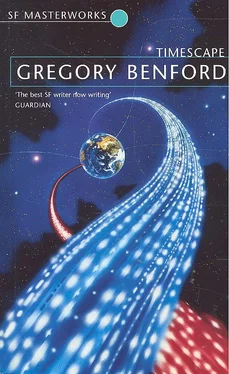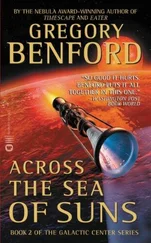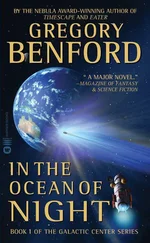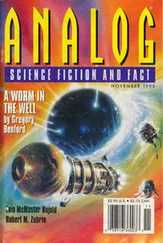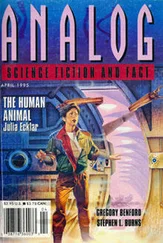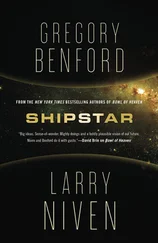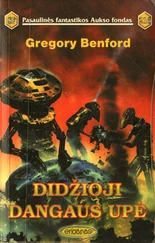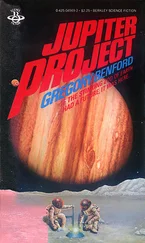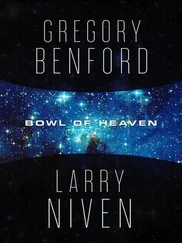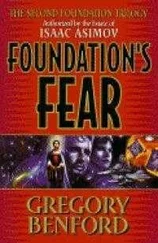• • •
Edwards was the first, but not the last. They turned up at a steady rate, once the San Diego Union story was picked up by other newspapers. Some drove in from Fresno and Eugene, intent on unraveling the riddle of the messages, each sure he knew the answer before he saw the evidence. Some brought manuscripts they had written on their ideas about the universe in general, or a particular scientific theory—Einstein was a favorite, and refuting him the common theme—or, occasionally, on Gordon’s experiments. The notion of writing a supposedly learned treatise, using only a vague newspaper article as the sole source, bemused Gordon. Some of the visitors had even published their theses, using the private presses beloved of amateurs. They would present them to him, lovingly handing over bound bundles with lurid covers. Inside, a jumble of terms elbowed each other for room in sentences that led nowhere. Equations appeared by sleight of hand, festooned with new symbols like fresh Christmas tree decorations. The theories, when Gordon took the time to listen, would begin and end in midair; they had no connection with anything else known in physics, and always violated the first rule of a scientific model: they were uncheckable. Most of the cranks seemed to think constructing a new theory involved only the invention of new terms. Along with “energy,” “field,” “neutrino,” and other common terms would appear “macron,” “superon,” and “fluxforce”—all undefined, all surrounded with the magic aura of the Believer.
Gordon came to recognize them easily. They would come to his office or laboratory, or call him at home, and within a minute he could tell them from ordinary folk. The cranks always had certain buzz words that appeared early on. They would claim to have solved everything—to have wrapped up all known problems in one grand synthesis. “Unified theory” was a dead giveaway. Another was the sudden, unexplained appearance of the Believer Words such as “superon.” At first Gordon would laugh when this happened, joshing the crank with a casual manner, sometimes making a joke. But a third hallmark of the crank was his humorlessness. They never laughed, never backed down from their ramparts. Indeed, open display of ridicule would bring out the worst in them. They were uniformly sure that every working scientist was out to steal their ideas. Several warned him that they had already applied for a patent. (The fact that you can patent an invention but not an idea had passed them by.) At this point Gordon would try to contrive a graceful exit from the conversation; on the telephone this was easy; he just hung up. Cranks in person were not so simple. Resistance to their groundbreaking ideas inevitably led to open threats that they would—here there came the grim look, the reluctant decision that they must use the final, ultimate weapon—go immediately to the newspapers. Somehow, to them, the press was always the judge of things scientific. Since Gordon had been elevated to their attention by the San Diego Union , he would of course fear deeply any attack on his position in the same hallowed pages.
Finally, Gordon developed defenses. On the telephone he was quick to hang up—so quick that he cut off his own mother once, when he did not recognize her voice and could not make out anything intelligible over the transcontinental static. Crank manuscripts and letters were equally easy He wrote a note saying that while the person’s ideas were “interesting” (a suitably non-judgmental term), they were beyond his competence, so he was unable to comment on them. This worked; they never replied. On-the-spot cranks were the worst. He learned to be abrupt, even rude. This got rid of most of them. The harder, persistent sort—such as Edwards—Gordon learned to derail, to gently deflect onto other matters. Then he would edge them toward the door, murmuring reassuring phrases—but never a promise to read a manuscript, attend a lecture, or vouch for a theory. That way lay further involvement and more wasted time. He would edge them toward the door and they would go—grudgingly, sometimes, but they would go.
A side effect of this crank traffic came to light in casual remarks from other members of the department. They noted the cranks with interest at first. Amusement followed, and Gordon provided them with anecdotes of strange theories and even stranger behavior. But in time the mood changed. Other faculty disliked having the department known for its garbled image in the San Diego Union . They stopped asking him, at the afternoon coffee break, what new crank had come by. Gordon noticed the change.
CHAPTER EIGHTEEN

MAY 24, 1963
THE SAN DIEGO AREA WAS GROWING AND SPREADING. Rather than pattern itself on the jumble of Los Angeles, the younger city to the south chose to encourage white-collar employers, “clean” industries, and think tanks. The largest such tank in the area was General Atomic, scarcely a mile from the fledgling University. Quite considerable fish were to be seen swimming in its waters, puzzling at government-sponsored problems. Noted names from Berkeley and Caltech spent pleasant months scribbling on blackboards while outside, the General Atomic squirrels and rabbits lazily foraged for their handouts. The animals were part of a psychologist’s deliberate plan to evoke rest, quiet, and deep thought; the resemblance to a Disney film may have been accidental. The architect’s remorselessly circular motif for the central General Atomic offices, with the eagerly cooperative library at its center, had a similar aim. The ringed roads and buildings recalled Oriental notions of completeness, of serenity, of rest. The curved hallways would increase contact between researchers. In fact, though, the inescapable geometry meant that no one could see further than thirty feet along the curving corridors. This tended to prevent the accidental meetings as scientists came and went; they passed out of view before they could be noticed. To go home or to the library meant moving radially, and thus seeing nobody. As Freeman Dyson said that summer, “The mean interaction distance around here is no bigger than a soccer goal.” Yet often it was enough; these were exciting times. Only six months before, Mariner II had surveyed Venus close up for the first time. Gell-Mann and others were plumbing new depths in particle theory. In April, J. Robert Oppenheimer was named winner of the Atomic Energy Commission’s 1963 Fermi award. Oppenheimer had been, in the eyes of many scientists, the public whipping boy of the McCarthy era; he had been declared a security risk in 1954. Now at last the government seemed to be serving some penance for its stupidity. Hard feelings against Edward Teller, who had not spoken out strongly for Oppenheimer, in turn began to wane.
The feeling of opening, of fresh starts, was on the political scene already a cliché. The Kennedy ambience was a canon of media hype. Vaughn Meader’s “The First Family” album, which mocked the Kennedy clan, sold briskly; the public sensed that the derision was all in good fun. Scientists were a more skeptical lot, however, mostly liberal or radical, and bothered by Bobby Kennedy’s generally perceived ruthlessness and neglect of the legal niceties of wiretapping. But the rise of support for scientific research was now coming to seem like a permanent feature, beginning with a sudden rush after Sputnik and rising linearly. Everyone knew it would plateau out, but not soon; there was much to be done, and few to do it.
Freeman Dyson came to California on leave from Princeton’s Institute for Advanced Study, to work on the Orion project. Dyson had an immense reputation as a theoretical physicist and thus was invited to give one of the last spring Colloquia in the UCLJ Physics Department. Gordon was pleased. He was to give the very last Colloquium of the year, and to have Dyson speak beforehand about some speculative ideas might defuse some of the reaction to Gordon.
Читать дальше
